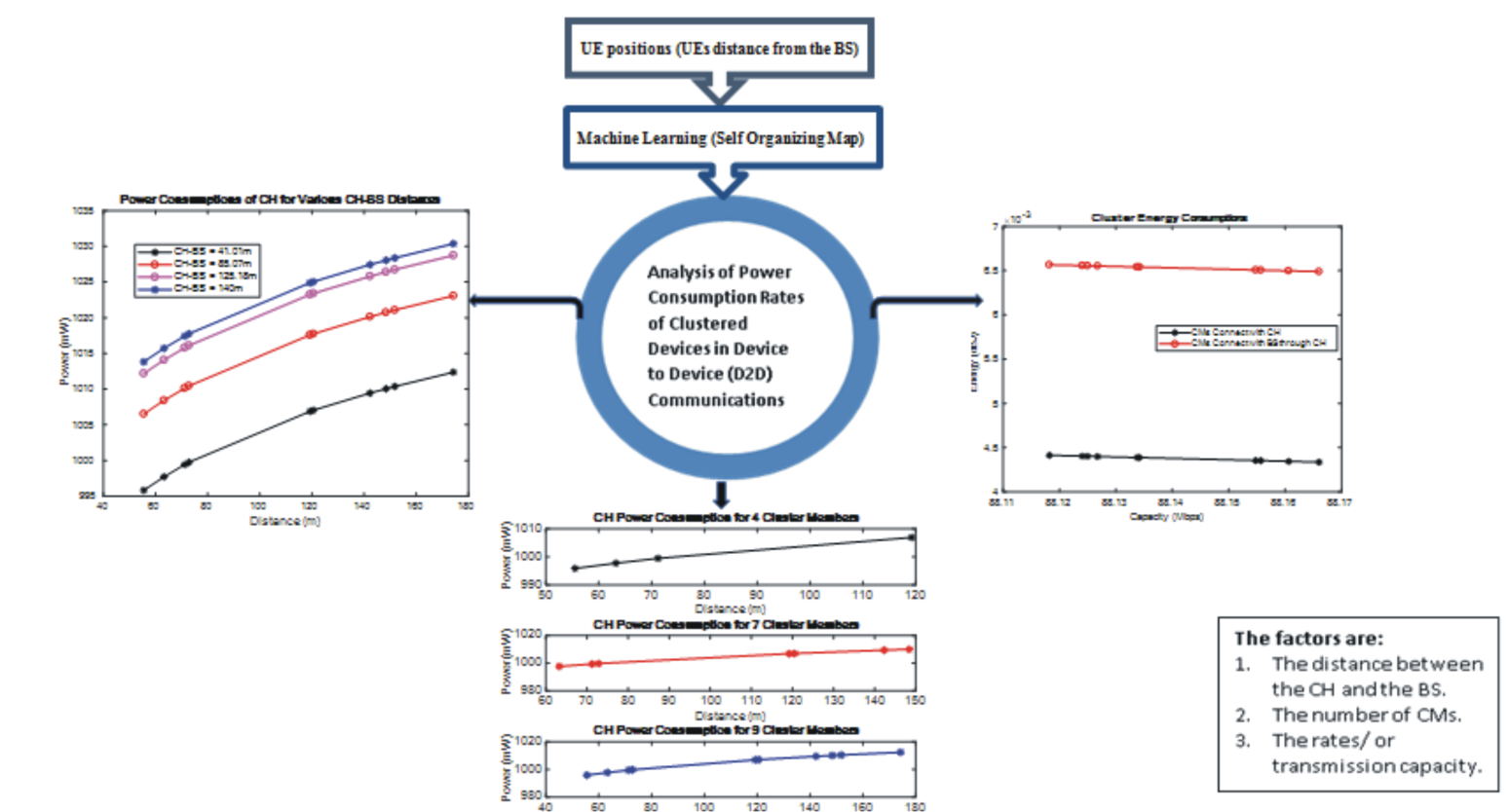Analysis of Power Consumption Rates of Clustered Devices in Device to Device (D2D) Communications
Keywords:
Device to Device Communication, Self Organizing Map, Clustering, Device to Device Power ConsumptionAbstract
Efficient utilization of resources in D2D communication demands that cluster of devices should be formed. When clusters are formed, a cluster head (CH) is selected to coordinate both intra-and inter-cluster communications. In this study, Self Organizing Map (SOM) was adopted to cluster D2D devices, using the distance between the devices and the base station (BS) as the cluster input data. The influence of attenuation on power consumption of the devices was considered in deriving the power consumption model. It was shown that more power is consumed by the CH when the distance between the CH and the BS increases, as well as when the number of cluster members (CMs) associated with the CH increases. In addition, it is more energy efficient for the CMs to communicate directly with the CH than for CMs to communicate with the BS through the CH.


